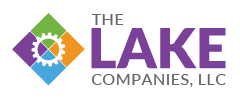Look to Women to Close the Manufacturing Skills Gap

As of this writing, it is about 165 days until the Women in Manufacturing Summit. We would like to interrupt our daily manufacturing discourse to take just a moment to reflect on the importance, need, and appreciation we have of women in the manufacturing workforce.
The State of Women in Manufacturing
What is the number one obstacle that plagues all US manufacturers across the board? Talent. Finding skilled workers to do the jobs has been the biggest problem afflicting manufacturers over the last few years. In addition, talent at all levels, says Deloitte, is becoming a key competitive differentiator.
Deloitte reports that manufacturing executives around the world rank talent as the top driver of manufacturing competitiveness. At the same time, the US manufacturing industry faces an estimated two-million-worker shortfall over the next decade, and industry executives report that 6 out of 10 positions are currently unfilled due to a manufacturing skills gap. Moreover, what is the one critical element that can aid in closing the gap? Women.
Women constitute one of US manufacturing’s largest pools of untapped talent. Women totaled about 47 percent of the US labor force in 2016, but only 29 percent of the manufacturing workforce. Women earn more than half of all associates, bachelors, and master’s degrees. They are also advancing in their careers, holding more than half of all US managerial and professional positions.
So how effectively are manufacturing companies attracting, recruiting, and retaining women? Well, it turns out that the Manufacturing Institute, Association for Supply Chain Management (APICS), and Deloitte surveyed more than 600 women in manufacturing and conducted nearly 20 manufacturing executive interviews to explore that very topic.
The women surveyed are:
- Well-educated (88 percent hold a bachelor’s degree or above),
- Experienced (71 percent have been working more than 15 years),
- Hold a variety of senior positions,
- Are employed by large companies (52 percent work in organizations with annual revenue exceeding $1 billion),
- And are evenly represented across generations.
What do Women say?
Here are a few highlights:
- What is most important to women in manufacturing?
- Attractive pay
- Challenging and interesting work
- Work/life balance
- What programs do women rank as most important?
- Formal and informal mentorship programs
- Flexible work practices
- Increasing the visibility of key leaders who serve as role models
Perceived gaps
Despite progress in certain areas, manufacturers have room for improvement in their efforts to attract, retain, and develop women.
- Less than 15 percent of women surveyed believe their industry is very accepting of family / personal commitments and allows them to meet these commitments without impairing their career.
- More than 4 out of 10 women surveyed are either responsible for the majority of household duties or share home responsibilities equally with their spouse or partner.
- Nearly three quarters (72 percent) of women surveyed believe they are underrepresented in their organization’s leadership team, with a significantly higher share of junior management (78 percent) believing they are underrepresented when compared to senior management.
Formal and informal mentorships, flexible work practices, and improving the visibility of key leaders who serve as role models can be the most impactful programs to help manufacturers attract and retain the considerable talent pool that women represent. The survey is a treasure trove of information on how to attract and retain women in the manufacturing workforce and is recommended reading for job shops to add more talent.


Comments are closed.